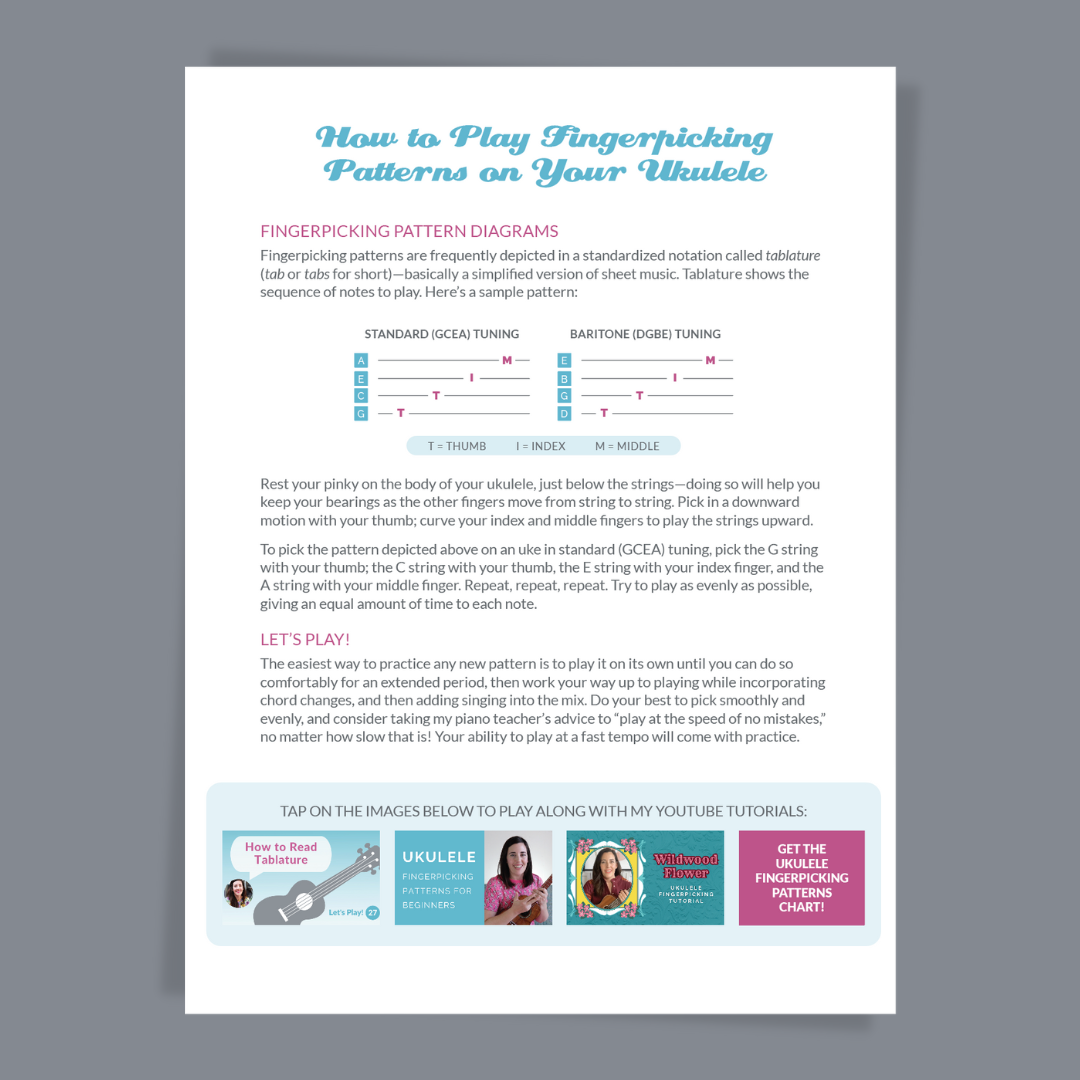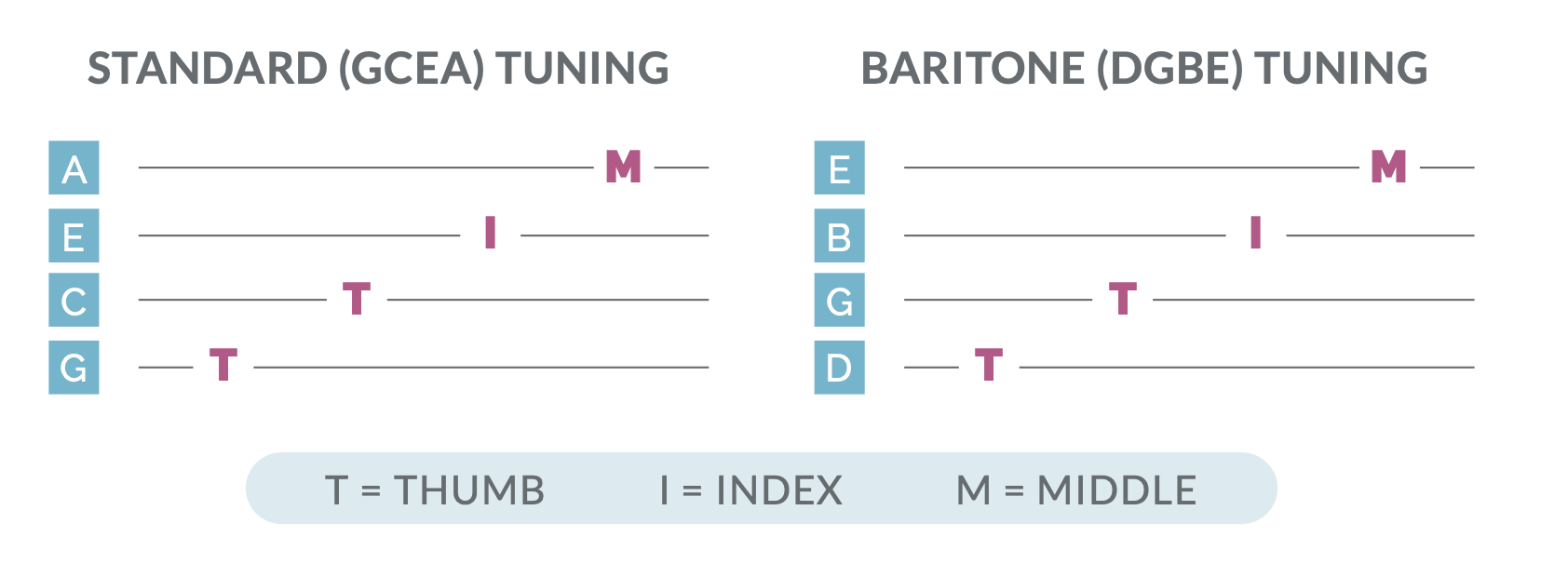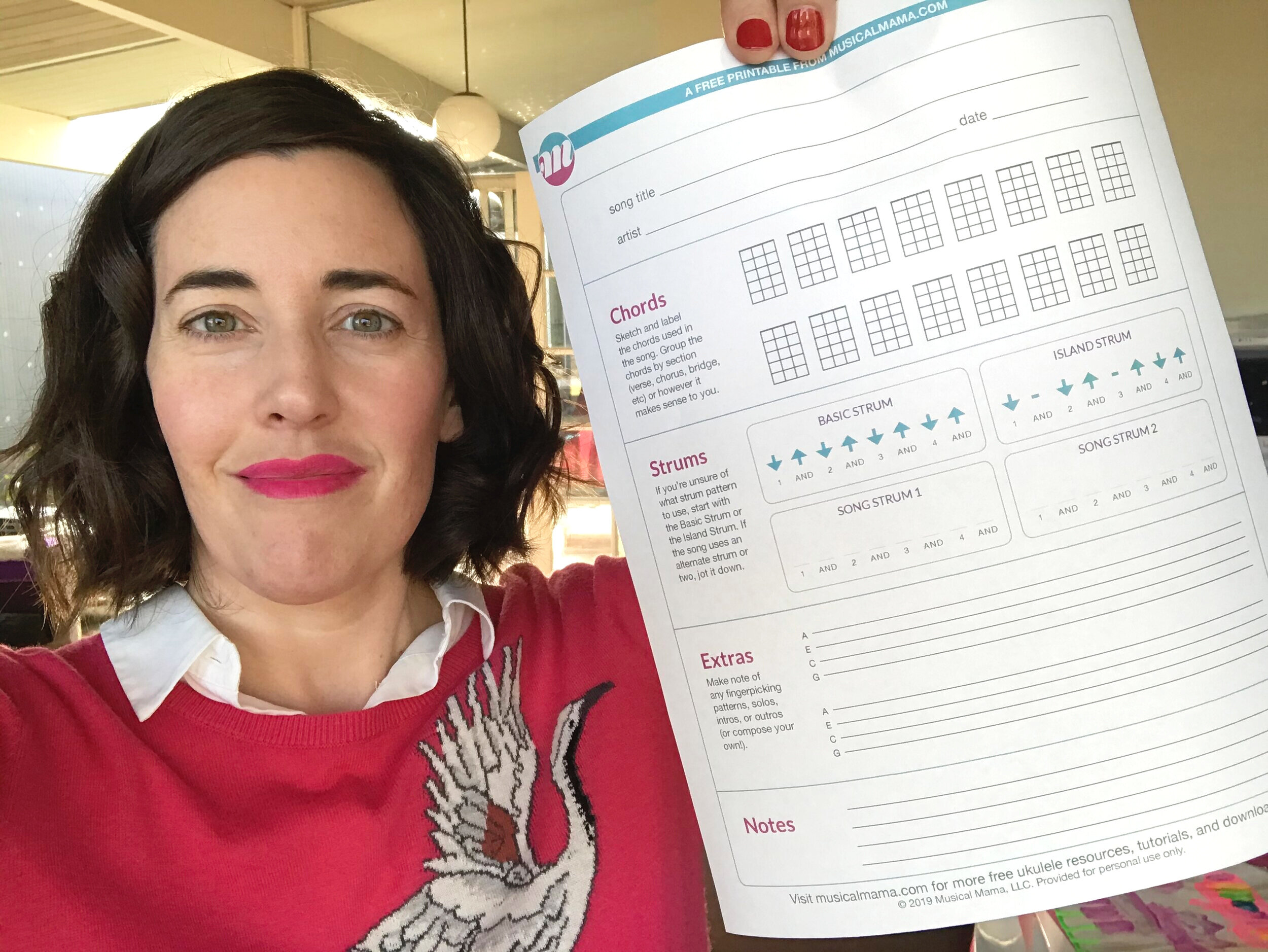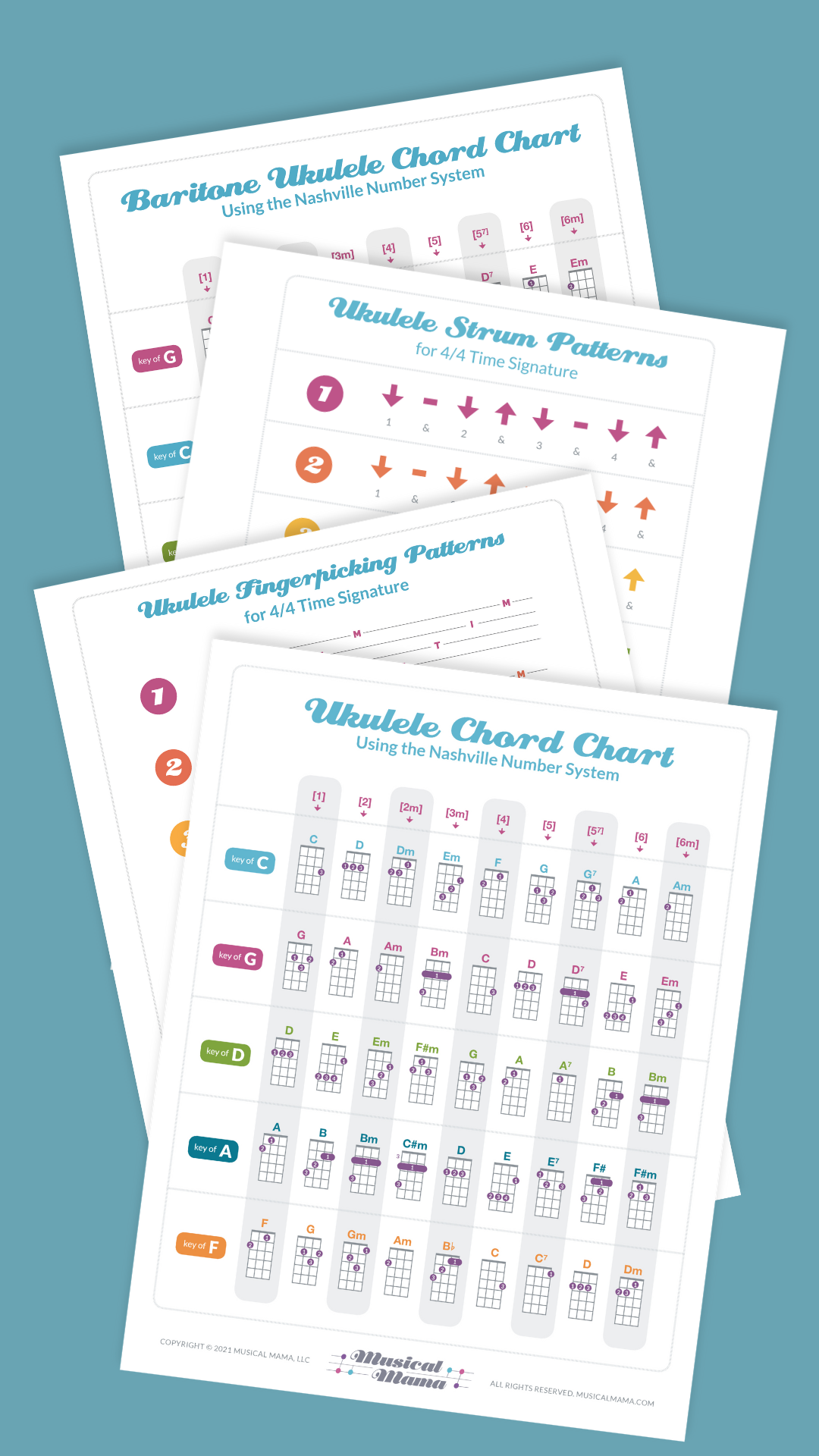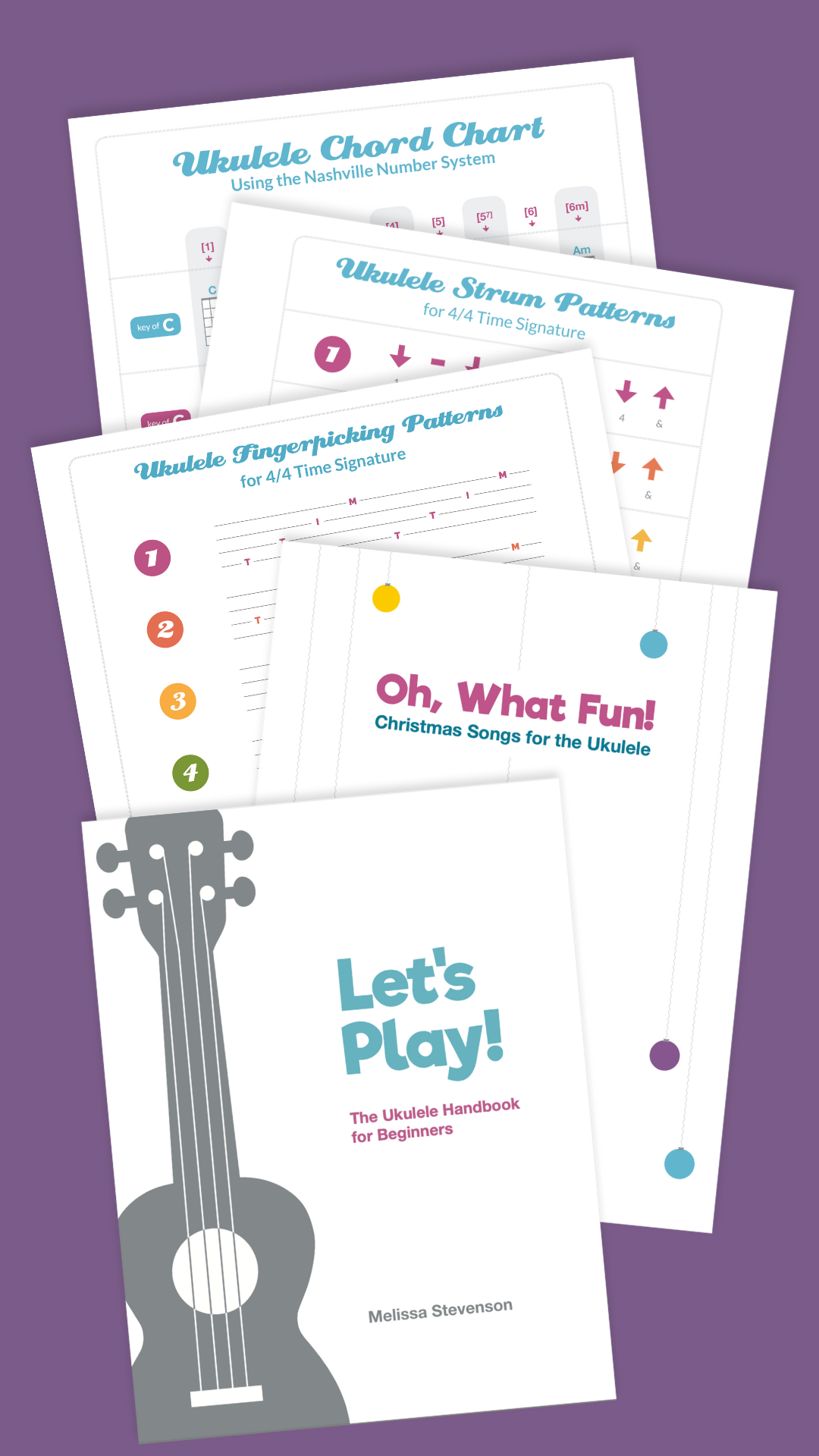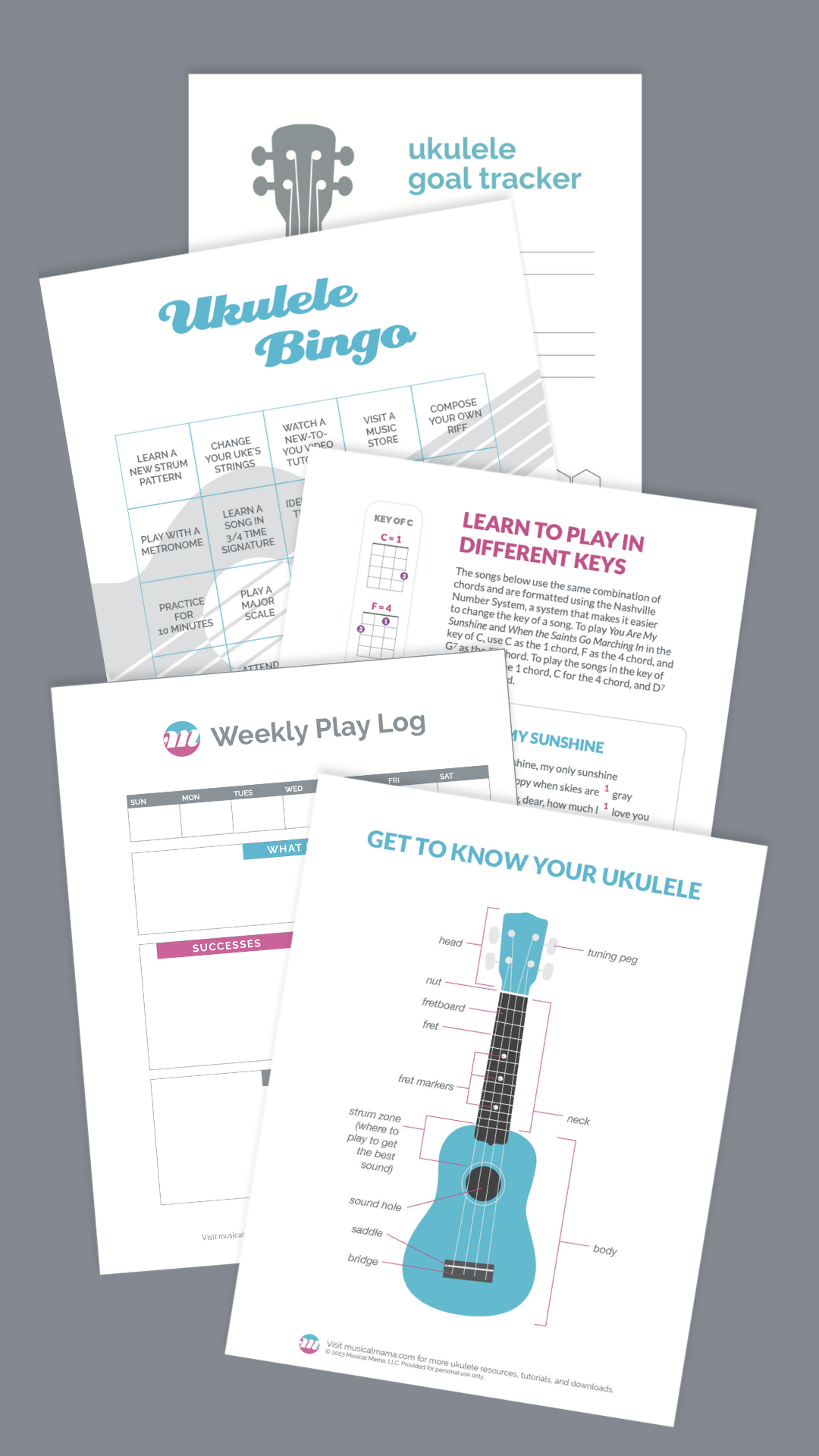For most of us, we begin playing our ukuleles by strumming them. And when we strum, we typically play all of the strings at once. When we fingerpick, we pluck strings individually. My introduction to fingerpicking came via a copy of Earl Scruggs and the 5-String Banjo. In his book, Scruggs outlines his renowned style of playing—it’s called three-finger picking because it utilizes the thumb, index, and middle fingers to play the strings. Classically trained string players are often taught the PIMA method, which adds the ring finger into the mix, but my picking feels much clumsier when I try to incorporate it. Perhaps I would feel differently if I had learned the PIMA method first, but I’ll never know. As is true for many areas of making music, there no singular way of doing things. Try these picking patterns using whatever combination of fingers feels most natural to you. So how can we fingerpick? Well, so long as you can keep a steady beat, you can play your strings however you’d like. But if you’re just starting out, it’s helpful to begin fingerpicking by playing a pattern.
Download My Free Fingerpicking Guide
How to Read Fingerpicking Pattern Diagrams
Fingerpicking patterns are frequently depicted in a standardized notation called tablature (tab or tabs for short)—basically a simplified version of sheet music. Tablature shows the sequence of notes to play. Here’s a sample pattern:
Rest your pinky on the body of your ukulele, just below the strings—doing so will help you keep your bearings as the other fingers move from string to string. Pick in a downward motion with your thumb; curve your index and middle fingers to play the strings upward.
To pick the pattern depicted above on an uke in standard (GCEA) tuning, pick the G string with your thumb; the C string with your thumb, the E string with your index finger, and the A string with your middle finger. Repeat, repeat, repeat. Try to play as evenly as possible, giving an equal amount of time to each note.
LET’S PLAY!
The easiest way to practice any new pattern is to play it on its own until you can do so comfortably for an extended period, then work your way up to playing while incorporating chord changes, and then adding singing into the mix. Do your best to pick smoothly and evenly, and consider taking my piano teacher’s advice to “play at the speed of no mistakes,” no matter how slow that is! Your ability to play at a fast tempo will come with practice.
Ready to give fingerpicking a try? These videos can help:
Looking for more? My Fingerpicking Patterns Chart has eight versatile fingerpicking patterns that work for ukes in standard and baritone tuning!

